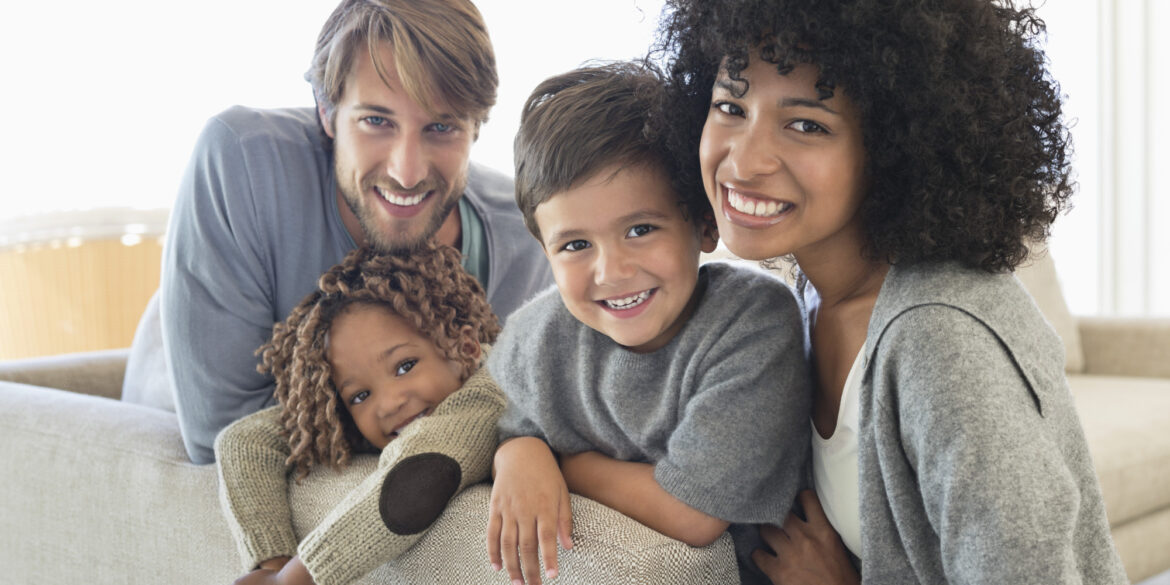‘Mixed’ couple relationships among people from different racial, ethnic and religious backgrounds have been one of the consequences of centuries of migration. ‘Mixed’ couples and their families are part of a growing number of family types that have become more prominent in the modern world. [1]
The points below give some current figures relating to ‘mixed’ relationships. There are also some ideas of where people in ‘mixed’ relationships or ‘mixed’ families can find support if needed.

source: candidbelle.com
Are ‘race’ and ethnic mixing recent experiences?
- There has been a very long history of ‘race’ and ethnic mixing in the UK, and the past 50 years have seen the sharpest rise in ‘mixed’ relationships and families in the UK. [2]
What is the size of the ‘Mixed’ population?
- The 2001 UK Census was the first time that the ethnic question included a ‘Mixed’ group category.
- In the 2001 UK Census, 14.6% of the non-white population identified themselves as ‘Mixed’. This was 1.2% of the whole population. [3]
- In the 2001 Census, 52% of all people reporting a ‘Mixed’ ethnic identity identified as Christian and 10% identified as Muslim. [2]
- The ‘Mixed’ group had the youngest age structure of all the ethnic group categories in the 2001 UK census – with 50% under the age of 16. [4]
- The ‘Mixed’ population is now one of the fastest growing ethnic groups. One estimate is that the ‘Mixed’ group is set to increase further by 30% between 2010 and 2024. [5]
- Data from the most recent 2011 Census is due to be released in 2012. It will be interesting to see how the size of the ‘mixed’ population has changed in the last 10 years.

source: metmuseum.org
Who forms ‘mixed’ relationships?
- ‘Mixed’ marriages made up 2% of all marriages recorded in the 2001 Census. [ONS, 2005]
- More recent analysis suggests that the number of couples in ‘mixed’ relationships is increasing. The level of ‘mixing’ varies across different ethnic groups. [6]
- Between 2004 and 2008, three percent of men and two percent of women from the majority white population in Britain formed relationships outside their ethnic group. [6]
- Pakistanis, Bangladeshis and Indians are less likely to marry outside their ethnic group than are Black Caribbeans and Black Africans. [7]
- Second generation minority ethnic men are five times more likely, and second generation women are three times more likely, than the first generation to marry a White British partner. [7]
- This suggests that ‘mixed’ relationships are becoming more common.
What sort of families do children of ‘mixed’ ethnic backgrounds live in?
- The majority – 55% — of dependent children from ‘mixed’ ethnic backgrounds are living with both their biological parents, married or cohabiting. [4]
- Recent analyses suggest that households with a ‘mixed’ child are more likely to have higher incomes, a higher level of education and are generally less likely to live in lone parent households compared to households with non-mixed children from ethnic minorities. [4;8]
- This challenges stereotypes that relationships across ‘race’ and ethnic groups are mostly short-term or that ‘mixed’ families are often economically deprived. However, it should be noted that variations were found between different ‘mixed’ groups.

It is important not to rely on census categories to determine what life is like for ‘mixed’ couples and their families. Statistical figures and categories cannot fully capture the complex and rich experience of these diverse couples and their families. Additionally, these figures are only estimates, as there are no clear way of measuring mixedness, and therefore no accurate figure on how many ‘mixed’ families there are in the UK.
You can read and hear what some people in ‘mixed’ couples say about their relationship and family here on thecoupleconnection.net.
Where can people in ‘mixed’ relationships or ‘mixed’ families find support? Thecoupleconnection.net aims to provide support for all couples and families. The article on “An introduction to ‘mixed’ families” identifies other areas on this site that may be of particular use.
There are other organisations that provide support specifically for ‘mixed’ couples and those from ‘mixed’ families.

source: stocksy.com
References
[1] Bauer, E. (2010), The Creolisation of London Kinship: Mixed African-Caribbean and White British Extended Families 1950-2003. Amsterdam: Amsterdam University Press.
Caballero, C., Edwards R. & Puthussery S. (2008a), Parenting ‘Mixed’ Children: Negotiating difference and belonging in mixed race, ethnicity and faith families. York: Joseph Rowntree Foundation.
[2] Henriques, F. (1975), Children of Conflict: A Study of Interracial Sex and Marriage. New York: E.P. Dutton & Co., Inc. Bradford, Ben (2006), Who are the ‘Mixed’ Ethnic Group? London: Office for National Statistics
[3] Aspinall, P. (2009), ‘“Mixed race”, “mixed origins” or what? Generic terminology for the multiple racial/ethnic group population’, Anthropology Today, 25(2): 3-8. Owen, C. (2007), Statistics: The Mixed Category in Census 2001’ in M. Sims (ed.) Mixed Heritage – Identity, Policy and Practice. London: The Runnymede Trust.
[4] Caballero, C., Edwards, R. & Smith, D. (2008). ‘Cultures of Mixing: Understanding partnerships across ethnicity’. Twenty-First Century Society, 3 (1): 49-63.
[5] Aspinall, P. (2009) Concepts, terminology, and classifications for the ‘mixed’ ethnic or racial group in the United Kingdom’. Journal of Epidemiology & Community Health. Online First doi:10.1136/jeck.2009. Song, M. (2007), “The Diversity of ‘the’ Mixed Race Population in Britain”, in M. Sims (ed.) Mixed Heritage – Identity, Policy and Practice. London: The Runnymede Trust.
[6] Platt, L. (2009). Ethnicity and Family Relationships Within and Between Groups: An Analysis Using the Labour Force Survey. ISER: University of Essex.
[7] Mutarak, R. & Heath S. (2010) ‘Who Intermarries in Britain? Explaining ethnic diversity in intermarriage patterns’, The British Journal of Sociology 61 (2).
[8] Panico, L., & Nazroo, J. Y. (2011). The social and economic circumstances of mixed ethnicity children in the UK: findings from the Millennium Cohort Study. Ethnic and Racial Studies, DOI: 10.1080/01419870.2011.556745

